by
Esther Mar
| Jan 21, 2020
Yield Point Elongation (YPE) – Pros and Cons
Yield Point Elongation is a characteristic that has a significant effect on the usability of steel. To recap what is stated in the article on Tensile Testing, in a reference to the Engineering Stress-Strain curve, the Yield Point is the first stress, less than the maximum obtainable stress, at which an increase in strain occurs without an increase in stress. Such behaviour is only common to certain materials. These materials are said to exhibit a Yield Point Elongation (YPE) as seen in the schematic on the left.
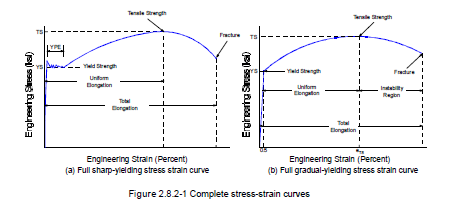
The presence of a YPE can be detrimental in that it can result in conditions such as coil breaks, edge breaks, fluting, stretcher strain, and reel kinks/creases, which may be aesthetically undesirable. Sometimes the conditions are severe enough to affect flatness as well.
Coil Breaks and Edge Breaks can be incoming or can occur during customer processing depending on the history of the material. Fluting and Stretcher Strain occurs during forming. Reel Kinks are transverse ridges, or “breaks”, on successive inner wraps of a coil. These are caused by the start of the coiling process. Example photographs follow.
Where such conditions are objectionable the supplier needs to know so as to provide appropriate material. The presence of YPE is affected by chemical composition (there are grades that don’t exhibit a YPE) and by mill processing (skin passing/temper rolling). The latter eliminates the YPE in addition to improving the surface and slightly reducing thickness variation. The effect is temporary, though, as with time the product undergoes a phenomenon called “aging” and the YPE returns.
YPE in steel does, however, have a beneficial effect in certain applications, specifically in roll forming. Similarly, steel with a pronounced YPE shows less springback than steel with no YPE. Generally speaking steel with a YPE is highly formable.
Coil Breaks

Edge Breaks
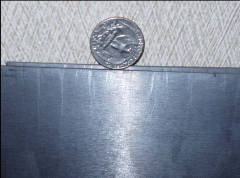
Fluting
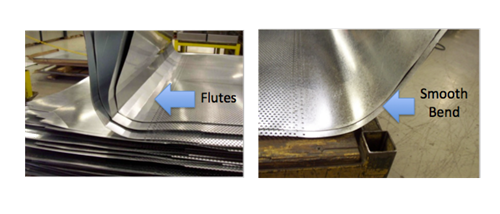 Stretcher Strain
Stretcher Strain
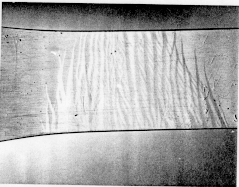
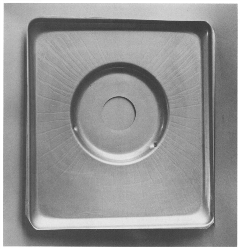
Reel Kinks
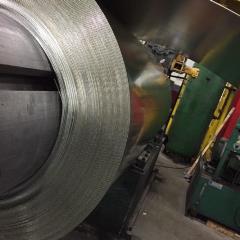
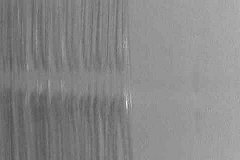
(A kink is shown in the 3 o’clock position in the photo on the left. The photo on the right shows a partially stoned sample.)